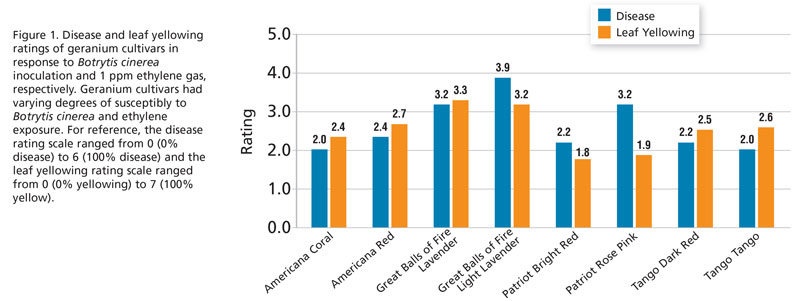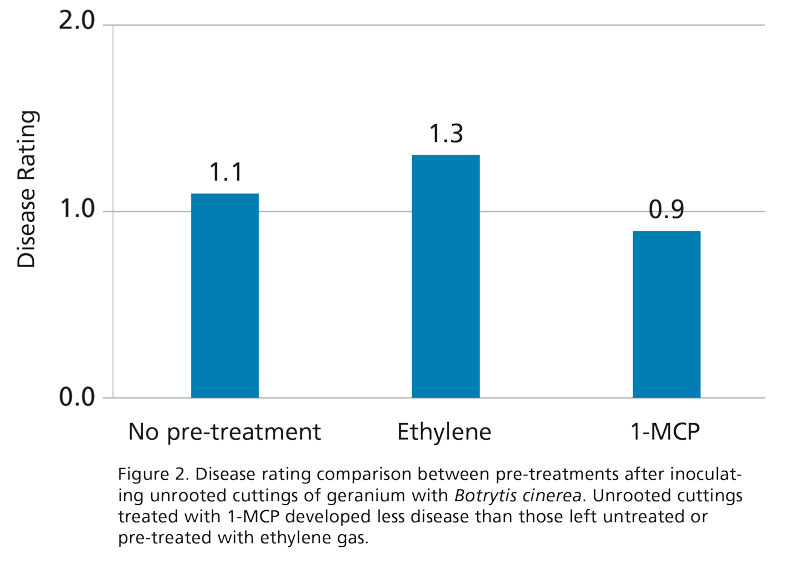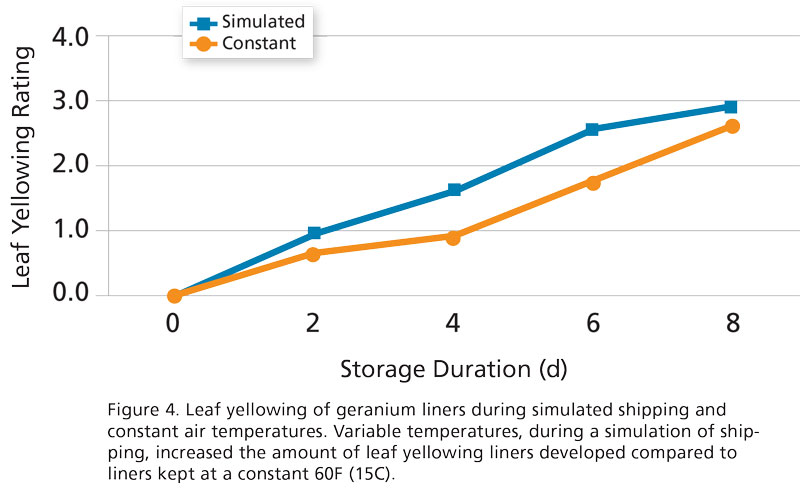4/1/2018
Where Are You Growing Botrytis?
Nathan Jahnke & John M. Dole
When growers talk about major problems, you often hear about labor, logistics and, of course, plant pests. Of the latter, Botrytis—a fungal pathogen that causes grey mold and botrytis blight—is one of the most common pests in greenhouses, nurseries, landscapes and even agricultural food operations. It can attack and blight buds, flowers, fruit, leaves and sometimes stems, especially during times of high humidity.
A great method of reducing Botrytis incidence and development is keeping plants and growing spaces clean. However, even in clean spaces plants can become more susceptible to Botrytis when they’re stressed, free water is available on leaves and stems, and air circulation is reduced.
When do these factors often occur? During shipping, storage and propagation. Research conducted at North Carolina State University has shed some light on these aspects of the supply chain so that you can determine where Botrytis is most likely to strike next in your operation.
Susceptible cultivars
There’s no known complete genetic resistance against Botrytis. This leaves growers highly reliant on fungicides and cultural practices. Cultivars can, however, have small, but measureable amounts of resistance.
Unrooted cuttings of geranium cultivars Americana Red, Americana Coral, Great Balls of Fire Light Lavender, Great Balls of Fire Lavender, Patriot Bright Red, Patriot Rose Pink, Tango Dark Red and Tango Tango were found to have varying levels of susceptibility to Botrytis cinerea and ethylene sensitivity (Figure 1). The ivy geraniums, Pelargonium peltatum, from the Great Balls of Fire series were most susceptible to Botrytis and had the highest leaf yellowing in response to 1 ppm of ethylene gas.
 The other cultivars, likely P. x hortorum, were very similar in disease rating, except for Patriot Rose Pink. Most cultivars’ ethylene sensitivity, measured by leaf yellowing, matched with their Botrytis susceptibility. Ethylene sensitivity may then be able to be used as an indicator of Botrytis susceptibility. However, most cultivars tested had similar disease ratings, so don’t rely solely on plant resistance to prevent Botrytis blight on geraniums.
The other cultivars, likely P. x hortorum, were very similar in disease rating, except for Patriot Rose Pink. Most cultivars’ ethylene sensitivity, measured by leaf yellowing, matched with their Botrytis susceptibility. Ethylene sensitivity may then be able to be used as an indicator of Botrytis susceptibility. However, most cultivars tested had similar disease ratings, so don’t rely solely on plant resistance to prevent Botrytis blight on geraniums.
Can ethylene actually help against Botrytis?
Although ethylene causes plant stress, in many cases it can be a helpful plant growth regulator and has even been found to work in plant defense pathways. A common ethylene protectant, 1-methylcycropopene (1-MCP), inhibits ethylene effects on plant material and, like other ethylene inhibitors, has been shown to affect plant defense responses.
To test whether ethylene and 1-MCP affect Botrytis development on geranium, we treated unrooted cuttings with ethylene or 1-MCP before inoculating with Botrytis spores. We found 1-MCP treated cuttings developed lower disease ratings than cuttings pretreated with ethylene and those left untreated (Figure 2).
 The differences between treatments were small, so 1-MCP may not be the most effective protectant. However, 1-MCP is extremely effective at reducing leaf yellowing and keeping tissue green, which may explain why disease ratings were lower compared to the untreated and ethylene-treated cuttings.
The differences between treatments were small, so 1-MCP may not be the most effective protectant. However, 1-MCP is extremely effective at reducing leaf yellowing and keeping tissue green, which may explain why disease ratings were lower compared to the untreated and ethylene-treated cuttings.
If you do use 1-MCP to protect your plant material from ethylene during shipping and storage, understand that 1-MCP doesn’t last forever; effectiveness is reduced as temperature increases, causing an increase in ethylene production, which could affect untreated plants in the same shipment.
Road weary
Shipping can be a stressful part of the supply chain for you and your plant material. Have you ever wondered what’s happening to your cuttings or liners once you ship them? Or maybe you wonder why your plants look stressed upon arrival.
We recorded air temperatures and relative humidity of geranium liner shipments across the country (Figure 3). Maximum, minimum and average air temperatures were 82, 39 and 62F (25, 3 and 16C), respectively. Luckily, transportation only lasted two to three days because these temperatures are much higher than the recommended shipping and storage temperatures of 35 to 50F (1.6 to 10C).
 Regardless of packing time and season, relative humidity of the tracked shipments exceeded 80% in less than three hours of packing and averaged 91% during shipping (data not shown). High relative humidity can help plants stay turgid and decrease water loss, but also has potential to result in condensation, which creates the perfect environment for Botrytis development.
Regardless of packing time and season, relative humidity of the tracked shipments exceeded 80% in less than three hours of packing and averaged 91% during shipping (data not shown). High relative humidity can help plants stay turgid and decrease water loss, but also has potential to result in condensation, which creates the perfect environment for Botrytis development.
There are two pre-shipping practices growers can adopt to avoid stressful shipping conditions. Make sure plants are free of disease throughout production and plant tissue is completely dry before boxing. These actions will reduce the chances of infection and disease development during or after shipping.
 Ensuring short transit time is also an important factor. In our tests, Botrytis blight developed in less than two days on inoculated liners and in six days on untreated, dry liners during simulated shipping. As stated earlier, air temperatures during shipping are extremely variable, but simulating this variability didn’t affect disease development in our tests. However, leaf yellowing was rated higher when liners were placed in fluctuating air temperatures compared to a constant air temperature of 60F (15C) (Figure 4). This means the more stable air temperatures are kept during shipping, the more likely plant material will reach its destination green and healthy.
Ensuring short transit time is also an important factor. In our tests, Botrytis blight developed in less than two days on inoculated liners and in six days on untreated, dry liners during simulated shipping. As stated earlier, air temperatures during shipping are extremely variable, but simulating this variability didn’t affect disease development in our tests. However, leaf yellowing was rated higher when liners were placed in fluctuating air temperatures compared to a constant air temperature of 60F (15C) (Figure 4). This means the more stable air temperatures are kept during shipping, the more likely plant material will reach its destination green and healthy.
Shipping can be an ambiguous part of the supply chain because there’s no current technology to know what plants are experiencing at a given moment. Learning the points in the supply chain where your plants are most likely to be susceptible to postharvest stress and disease can help you take steps to ensure your plants will keep their high quality. GT
Nathan Jahnke is a graduate research assistant and John Dole is a professor at North Carolina State University.